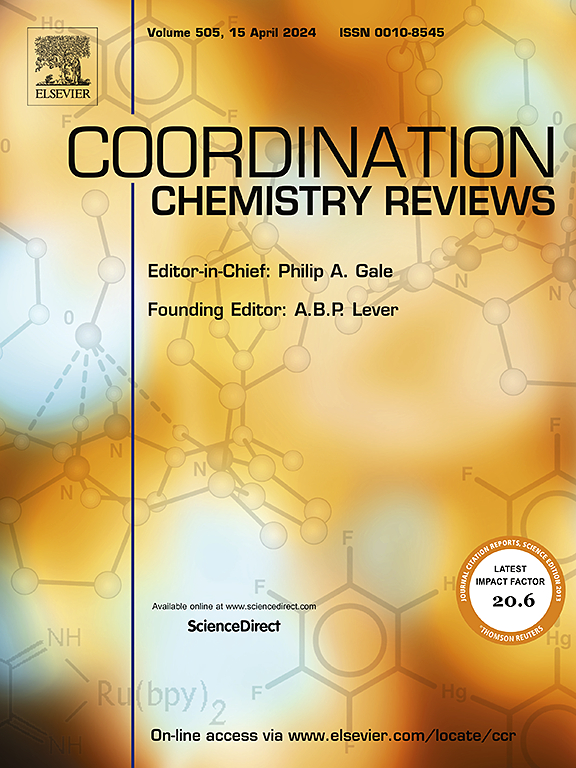以气体为基础的癌症综合疗法:最新进展和多疗法创新
IF 20.3
1区 化学
Q1 CHEMISTRY, INORGANIC & NUCLEAR
引用次数: 0
摘要
气体疗法因其安全、高效、能增强癌细胞的药物敏感性、几乎无耐药性等独特优势,已成为一种很有前景的肿瘤治疗方式。本文综述了一氧化碳(CO)、一氧化氮(NO)、硫化氢(H2S)和二氧化硫(SO2)四种主要气体疗法的抗癌机制及其优缺点。认识到单一气体疗法的挑战,我们讨论了它们与先进的多疗法的整合,包括光动力疗法(PDT),光热疗法(PTT),声动力疗法(SDT)和化学动力疗法(CDT),以最大限度地提高治疗效果。重点放在这些组合的协同效应上,特别是在克服肿瘤微环境(TME)挑战方面。最后,我们讨论了气体疗法在临床肿瘤学中的未来潜力,强调了诸如精确递送、剂量控制和临床实施的转化障碍等关键障碍。本文章由计算机程序翻译,如有差异,请以英文原文为准。

Integrative gas-based therapeutics for cancer treatment: Recent advances and multi-therapy innovations
Gas therapy has emerged as a promising modality for tumor treatment due to its unique advantages, including safety and efficiency, ability to enhance the drug sensitivity of cancer cells, and almost no drug resistance. In this review, we comprehensively explore the anticancer mechanisms, advantages and disadvantages of four key gas therapies: carbon monoxide (CO), nitric oxide (NO), hydrogen sulfide (H2S) and sulfur dioxide (SO2). Recognizing the challenges of single gas therapies, we discuss their integration with advanced multi-therapy approaches, including photodynamic therapy (PDT), photothermal therapy (PTT), sonodynamic therapy (SDT), and chemodynamic therapy (CDT), to maximize therapeutic efficacy. Emphasis is placed on the synergistic effects of these combinations, particularly in overcoming tumor microenvironment (TME) challenges. Finally, we address the future potential of gas therapies in clinical oncology, highlighting key obstacles such as precise delivery, dose control, and translational barriers to clinical implementation.
求助全文
通过发布文献求助,成功后即可免费获取论文全文。
去求助
来源期刊

Coordination Chemistry Reviews
化学-无机化学与核化学
CiteScore
34.30
自引率
5.30%
发文量
457
审稿时长
54 days
期刊介绍:
Coordination Chemistry Reviews offers rapid publication of review articles on current and significant topics in coordination chemistry, encompassing organometallic, supramolecular, theoretical, and bioinorganic chemistry. It also covers catalysis, materials chemistry, and metal-organic frameworks from a coordination chemistry perspective. Reviews summarize recent developments or discuss specific techniques, welcoming contributions from both established and emerging researchers.
The journal releases special issues on timely subjects, including those featuring contributions from specific regions or conferences. Occasional full-length book articles are also featured. Additionally, special volumes cover annual reviews of main group chemistry, transition metal group chemistry, and organometallic chemistry. These comprehensive reviews are vital resources for those engaged in coordination chemistry, further establishing Coordination Chemistry Reviews as a hub for insightful surveys in inorganic and physical inorganic chemistry.
 求助内容:
求助内容: 应助结果提醒方式:
应助结果提醒方式:


